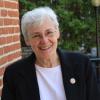
The life of St. John the Baptist is depicted in medieval mosaics at the Baptistery San Giovanni in Florence, Italy. (Wikimedia Commons/Sailko)
In the seventh year of the papacy of Francis, bishop of Rome, when António Guterres was secretary general of the United Nations, Ursula von der Leyen was president of the European Commission, Archbishop José Gomez led the U.S. Conference of Catholic Bishops and Joseph Biden was president of the United States, the world, plagued by climate change and still reeling from the COVID-19 pandemic, wondered where to find signs of hope.
That might be the way Luke would start writing a Gospel for our day. The first two chapters of Luke's Gospel, the infancy narratives, serve as a prelude to what follows. Luke starts over with Chapter 3, placing everything in the context of world and local events. He wanted his readers to understand just how the story he was about to tell played a role in the trajectory of human history.
Obviously, Luke would suggest that we too need to read his Gospel in the light of our own religious, social and political context. He would tell us that the state of the world's health and environment, the extremes of wars and peace, wealth and poverty, racism, division, social activism, religious devotion, lack of faith and anti-religious activities are the environment to which we must apply the Gospel if it is to have meaning for our time.
Although Luke probably never met John the Baptist, he knew as much about him as the millennials know about the Rev. Martin Luther King. Luke's information came from storytellers, some eyewitnesses, and Christian communities — people who remembered John's message because of his relation to Jesus.
Luke paints John as a prophet — the last and greatest of them. Luke shows how John applied Isaiah's nearly 600-year-old message to his own day. John combined tradition and his own unique ritual to gear people up, to draw their attention to their world so that they could decipher God's fingerprints and the echo of God's voice in what they saw and heard happening around them.
John's unique take on his times included his use of Isaiah's message of consolation. In the verses previous to what John quotes, God calls Isaiah saying, "Comfort, give comfort to my people."
John takes on the role of preparing the time and space for God and the people to encounter one another. Like Isaiah, he calls his people to level the slopes, straighten the curves and smooth the roads of their lives so that they can encounter God's saving power among them.
How were they to do that? A thoroughgoing conversion and baptism for the forgiveness of sins.
John preached a radical message that is too tamely summarized as "repentance." Luke uses the word metanoia to describe it.
Metanoia is a combination of the Greek words meaning "beyond" and "mind." This indicates that metanoia is far more than an intellectual affair. It is an experience of allowing ourselves to be lured beyond what we know, beyond our self-concepts, our theologies and our assessment of current affairs. It empowers us to see the hope lurking in the combination of current events, our own story and our faith. Metanoia is a turnaround, a revision of everything we know. It carries us into a new vision of life.
Advertisement
John celebrated metanoia as an experience of being freed from guilt (forgiveness) and a ritual washing (baptism) that symbolized entering into a new life.
In essence, John invited people to experience what he had experienced: the freedom of knowing that God was about to do something great with them. In the words of Baruch, the people who went to John's baptism were symbolically removing their mourning clothes and outfitting themselves to take the road of transformation — of themselves and their history.
That was then. What about now, during the papacy of Francis and all our concerns? Is the Gospel just a history lesson about some people enthralled by a message of hope, or does it have something to do with us?
Historically, after each massive world crisis — the Black Death, world wars, etc. — we see a resurgence of a search for meaning. Religious vocations rise and multitudes turn to God anew with the feeling that surviving the crisis has reoriented them. People reevaluate their lives.
Might that be the call our Scriptures offer us during this Advent season? Are we desirous and capable of a 21st-century metanoia? Are we ready to help bring it about?
The thing about genuine conversion or metanoia is that we can't plan it. It is God's offer in a particular moment of history — a grace of insight that shakes us up and turns us around. All we can do is be open to it. So, let us gather the willing and accompany one another on the adventure God offers us with this new Advent of the year 2021. The time is right.
[St. Joseph Sr. Mary M. McGlone serves on the congregational leadership team of the Sisters of St. Joseph of Carondelet.]
